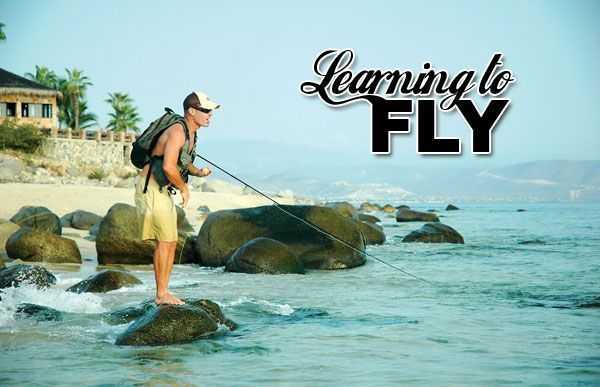Learning to flyfish can take days, weeks and maybe even months of preparation and practice. But once you are out on the water, what do you look for? You are basically thrusting yourself into an environment that is completely alien to humans. We rule the land, but fish rule the waters—the advantage is with them. However, nature and the fish we are seeking can provide us with some hints and clues that can help the angler be successful on the water.
Whatever vessel you fish from, be it a boat, canoe, kayak or by wade fishing, stealth is an essential key to your success. When you are fly fishing, stealth is even more essential. For the purposes of this article, we will use a very popular mode of fishing transportation: the kayak.
Kayaks and fly fishing go hand-in-hand. In a kayak, you can get into very shallow water almost silently. When fly fishing, you are not going to be casting more than 40 to 50 feet on the average. Being in a kayak will help you close the distance between you and your quarry, making your average fly cast relatively short. Not to mention, fishing from a kayak slows everything down so you can pay more attention to what is going on around you.
There are always signs on the water that clue the angler into the presence of fish. Nature provides us with many of those signs, and knowing what to look for will make it easier.
The first thing I look for when fishing the flats is bird activity. I especially look for wading birds. These birds are a good indicator that there is baitfish on the flats, and they also can tell you how deep the water is. My favorite example is the great blue heron. This is a bird that feeds on a primary diet of small fish. He has long legs that are about two to three feet long. If I see a heron prowling the flats and I can see most of his legs, I know the water is too shallow to hold fish. If that same heron is in water deep enough so his tail feathers are touching the water, you better believe I will be fishing near him. If he is hunting for his food, you can be sure a snook or redfish is hunting the same area. Diving birds also tell me that bait is around. Pelicans and fairy terns are great baitfish indicators. Chances are the area around them is worth checking out, because where there is bait, predators are sure to follow.
Other clues that I look for are the bottom structure and contour. I like to fish flats that have grass with sandy potholes in them. Trout and redfish have a tendency to hang in the grass on the edge of potholes and ambush bait that happens to pass through the pothole. I also look for current points. Snook are very lazy feeders. They will usually stage up facing into the current and let the tide bring them their meal. Strong tidal flows flush schools of bait in and out of the estuaries, making points and passes great ambush points for snook.
The fish that we are fishing for will provide us with very obvious signs. Patience is key when looking for these signs. They will come quick and are very easy to miss.
The first and most obvious sign is what we call a bust. This is when a fish feeds and breaks the surface of the water. All species of fish, at one time or another, will do this. Listening and judging where the bust comes from will clue you into where the fish are.
Fish that feed on the bottom, such as redfish, black drum, bonefish and permit, will stick their faces in the bottom, which will cause their tails to break the surface of the water. This is called tailing. This is the most coveted fish sign because a tailing fish is an undisturbed fish that is feeding.
Fish that are traveling in shallow water will create a push. This is a submarine-like wake that a fish makes when moving through the water. If the wake is erratic and fast moving, that fish is spooked and will probably not eat. If it is slow and deliberate, that fish is on the prowl looking for a meal.
Fish will give you many other signs to alert you to their presence. It takes time out on the water to learn every single sign that you could ever see. The most important thing is to get out there. Learn your local body of water and learn how the fish behave in it. Your success rate will increase. Let your fly fishing become an art form to you. The rewarding feeling that you will get from seeing the fish, making the perfect presentation, seeing the take, winning the battle and watching the fish swim away after the release is a feeling that you will get addicted to very quickly.
In the end, you will realize that learning to fly was the most rewarding thing you could have done as an angler.
Capt. Jon Bull
ShadowCastCharters@yahoo.com
(863) 860-7250
[easy-social-share]
